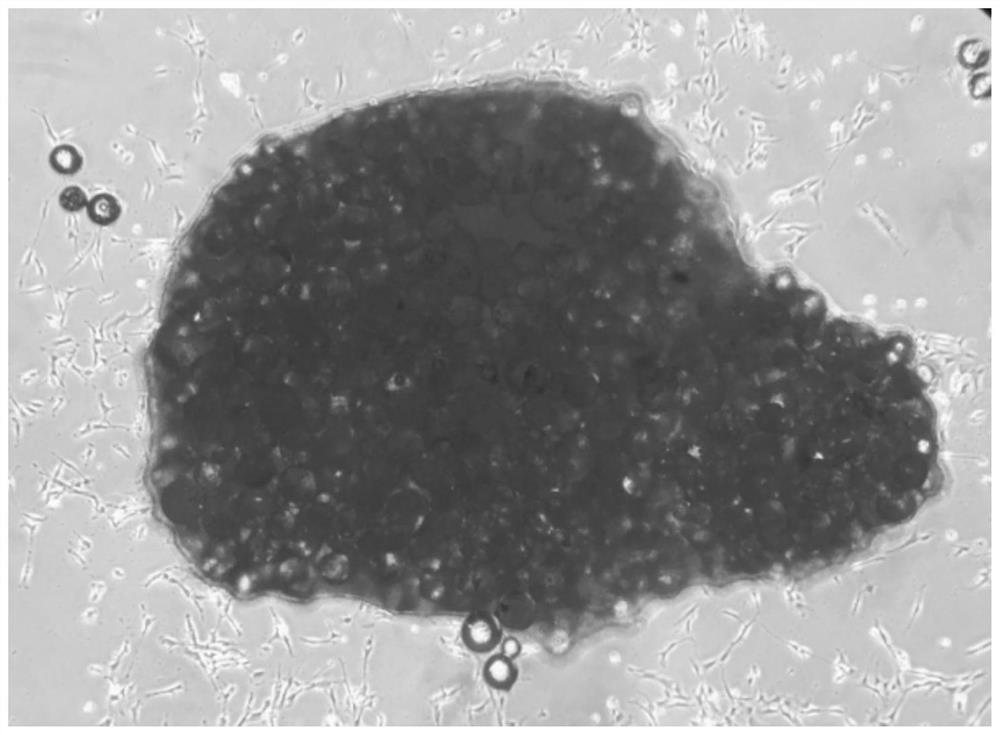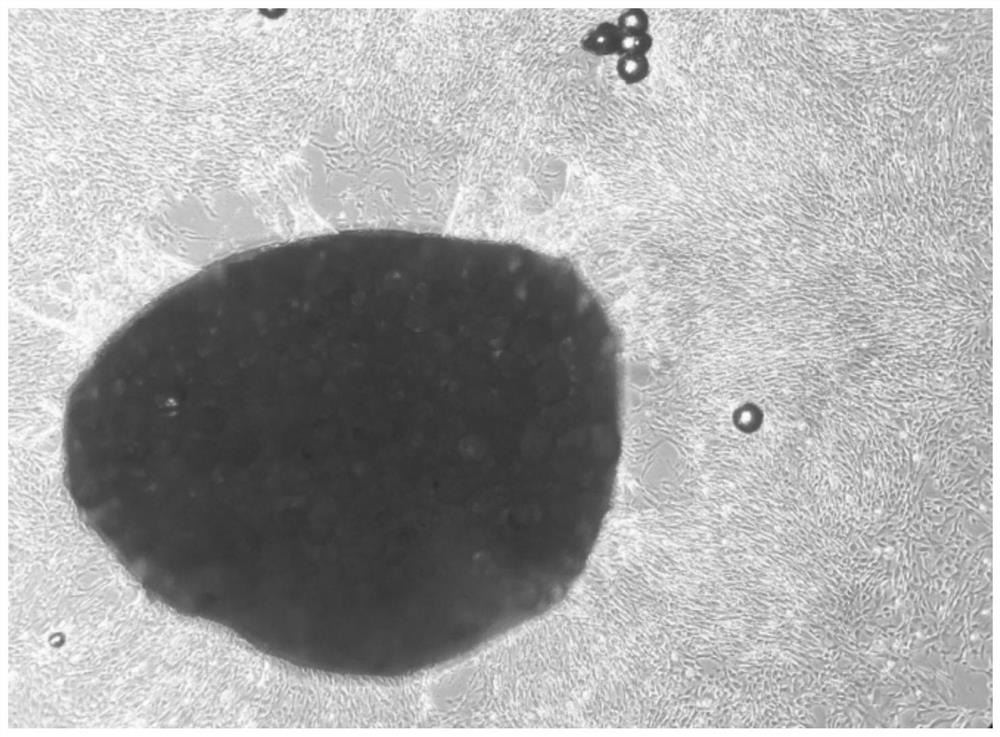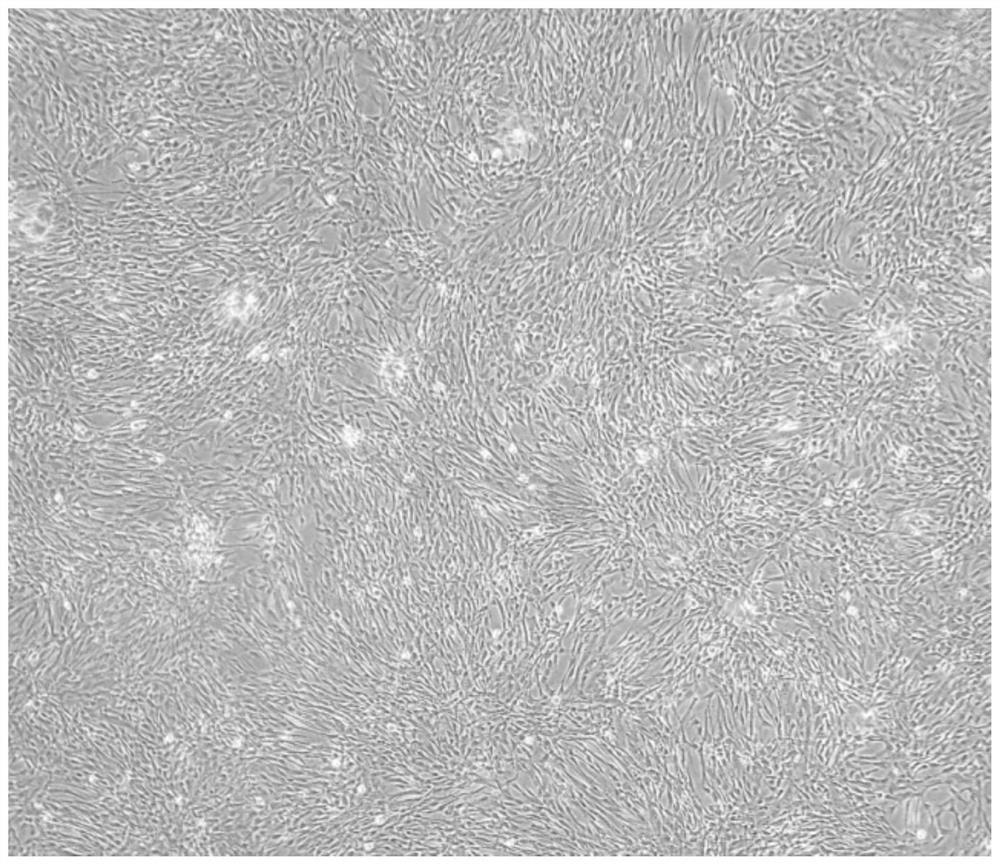Isolation and culture method of dental pulp mesenchymal stem cells
A technique for isolating and culturing mesenchymal stem cells, applied in the field of cell culture, can solve problems such as the inability to conduct large-scale production of dental pulp mesenchymal stem cells, and achieve the effects of improving the success rate of separation, improving quality, and simple and efficient operation.
- Summary
- Abstract
- Description
- Claims
- Application Information
AI Technical Summary
Problems solved by technology
Method used
Image
Examples
Embodiment 1
[0054] Example 1 Isolation and Culture of Deciduous Dental Pulp Mesenchymal Stem Cells
[0055] 1. Experimental operation:
[0056] Step S0, taking deciduous teeth as a deciduous tooth sample, first cleaning the deciduous tooth sample with physiological saline, soaking the deciduous tooth sample in 75% alcohol solution for 60 seconds for disinfection, and then washing and disinfecting the deciduous tooth sample again with physiological saline to obtain the pretreated deciduous tooth sample deciduous tooth samples, and place the treated deciduous tooth samples in a protective solution, and store them at 4-8°C for later use; wherein, the protective solution includes streptomycin with a mass concentration of 100-500 mg / L and 60-300 mg of streptomycin at a mass concentration DMEM / F12 medium of / L streptomycin;
[0057] Step S1, take out the deciduous tooth sample and crack it, then take out the pulp tissue in the deciduous tooth sample, spread out the length of about 6-8mm, cut t...
Embodiment 2
[0064] Example 2 Detection of Dental Pulp Mesenchymal Stem Cells
[0065] 1. Experimental operation:
[0066] CD34, CD45, HLA-DR, CD73, CD105, and CD90 of the target dental pulp mesenchymal stem cells were fluorescently labeled, and then the fluorescently labeled target dental pulp mesenchymal stem cells were detected by flow cytometry, and get as Figure 4 and Figure 5 The resulting data are shown.
[0067] 2. Result analysis: by Figure 4 It can be seen that the CD34, CD45 and HLA-DR of dental pulp mesenchymal stem cells are all negative, and the positive expression rate is less than 2%. Depend on Figure 5 It can be seen that CD73, CD105, and CD90 of dental pulp mesenchymal stem cells are all positive, and the positive expression rate is higher than 95%. It can be seen that the dental pulp mesenchymal stem cells cultivated by the method for isolating and culturing dental pulp mesenchymal stem cells of the present invention meet the international standard for mesenchy...
Embodiment 3
[0068] Example 3 Growth Experiment of Dental Pulp Mesenchymal Stem Cells
[0069] 1. Experimental operation:
[0070] Take an appropriate amount of target dental pulp mesenchymal stem cells for cell growth experiments to determine the growth curve of the target dental pulp mesenchymal stem cells, and obtain the following Figure 6 The growth curve graph shown.
[0071] 2. Result analysis: by Figure 6 It can be seen that with the growth of culture time, the number of cells also increases rapidly, and the number of cells can reach up to 4*10 7 Therefore, it can be seen that the proliferation ability of dental pulp mesenchymal stem cells is strong, and they have strong cell viability.
[0072] In summary, the technical solution of the present invention cultivates dental pulp stem cells by forming a glass microsphere-dental pulp tissue complex, which improves the cell separation rate, and the probability of successful cell separation can reach more than 95%; it improves the se...
PUM
| Property | Measurement | Unit |
|---|---|---|
| density | aaaaa | aaaaa |
Abstract
Description
Claims
Application Information
 Login to View More
Login to View More - R&D
- Intellectual Property
- Life Sciences
- Materials
- Tech Scout
- Unparalleled Data Quality
- Higher Quality Content
- 60% Fewer Hallucinations
Browse by: Latest US Patents, China's latest patents, Technical Efficacy Thesaurus, Application Domain, Technology Topic, Popular Technical Reports.
© 2025 PatSnap. All rights reserved.Legal|Privacy policy|Modern Slavery Act Transparency Statement|Sitemap|About US| Contact US: help@patsnap.com



